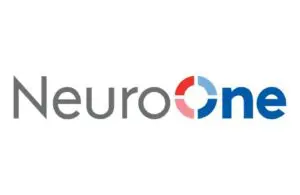 NeuroOne Medical Technologies (Nasdaq:NMTC) announced today that it completed an initial animal implant of its novel thin film paddle leads.
NeuroOne Medical Technologies (Nasdaq:NMTC) announced today that it completed an initial animal implant of its novel thin film paddle leads.
These leads enable spinal cord stimulation (SCS). NeuroOne intends for the devices to treat patients with chronic back pain due to multiple failed back surgery syndrome, intractable low back pain and leg pain.
Eden Prairie, Minnesota-based NeuroOne’s implant came as part of a feasibility study. The company is evaluating a variety of sizes and shapes of ultra-thin paddle leads in a sheep model. It used a mini laminectomy surgical approach to access the epidural space for device placement.
The company said all devices easily advanced to the target location in under one minute. NeuroOne placed a competitive silicone-based lead for comparison purposes. It reported that its own lead fit “comfortably in teh epidural space.” The veterinary surgeon reported no concerns regarding the lead’s placement.
What this means for NeuroOne
NeuroOne said in a news release that the results demonstrate feasibility for the placement of a thin film paddle lead intended to treat chronic back pain due to multiple failed back surgeries. The company plans to complete more tests to optimize design and placement.
Additionally, NeuroOne has a percutaneous paddle lead placement system under development. It says that would eliminate the need for an incision in the patient’s back. The company already completed preliminary benchtop testing for this approach.
“This represents a major milestone for the company as we continue our development of innovative devices that provide therapeutic properties coupled with recording capabilities,” said NeuroOne CEO Dave Rosa. “The market opportunity for spinal cord stimulation is large and growing. We believe our technology can fill a market need for improved patient outcomes due in part to its potential ability to place a paddle device through a needle, provide a larger stimulation surface area of the spinal cord, better conformability with the tissue and improve battery life of devices, reducing the frequency of patient’s need to recharge or replace the battery.”